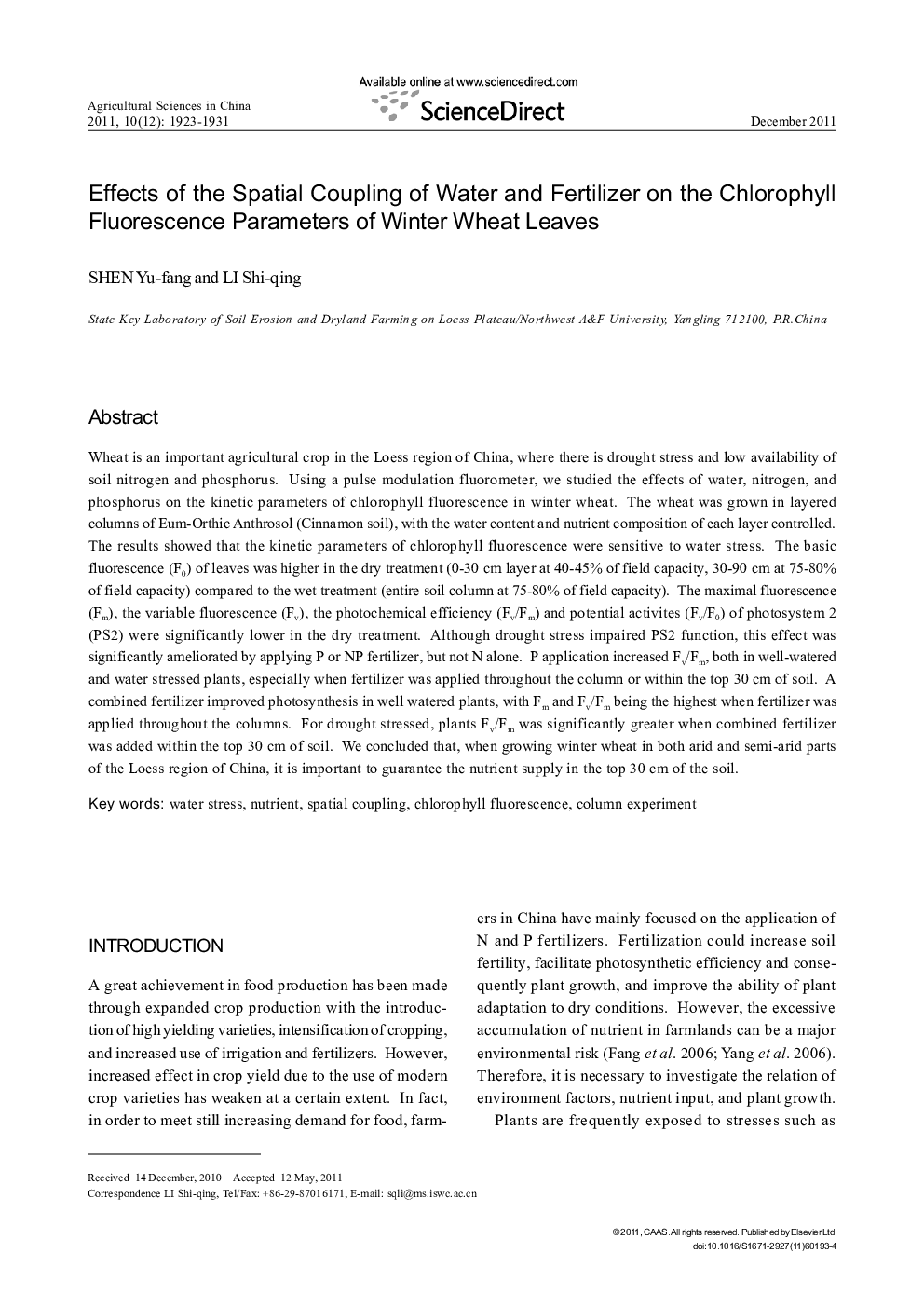| Article ID | Journal | Published Year | Pages | File Type |
|---|---|---|---|---|
| 4489784 | Agricultural Sciences in China | 2011 | 9 Pages |
Wheat is an important agricultural crop in the Loess region of China, where there is drought stress and low availability of soil nitrogen and phosphorus. Using a pulse modulation fluorometer, we studied the effects of water, nitrogen, and phosphorus on the kinetic parameters of chlorophyll fluorescence in winter wheat. The wheat was grown in layered columns of Eum-Orthic Anthrosol (Cinnamon soil), with the water content and nutrient composition of each layer controlled. The results showed that the kinetic parameters of chlorophyll fluorescence were sensitive to water stress. The basic fluorescence (F0) of leaves was higher in the dry treatment (0-30 cm layer at 40-45% of field capacity, 30-90 cm at 75-80% of field capacity) compared to the wet treatment (entire soil column at 75-80% of field capacity). The maximal fluorescence (Fm), the variable fluorescence (Fv), the photochemical efficiency (Fv/Fm) and potential activites (Fv/F0) of photosystem 2 (PS2) were significantly lower in the dry treatment. Although drought stress impaired PS2 function, this effect was significantly ameliorated by applying P or NP fertilizer, but not N alone. P application increased Fv/Fm, both in well-watered and water stressed plants, especially when fertilizer was applied throughout the column or within the top 30 cm of soil. A combined fertilizer improved photosynthesis in well watered plants, with Fm and Fv/Fm being the highest when fertilizer was applied throughout the columns. For drought stressed, plants Fv/Fm was significantly greater when combined fertilizer was added within the top 30 cm of soil. We concluded that, when growing winter wheat in both arid and semi-arid parts of the Loess region of China, it is important to guarantee the nutrient supply in the top 30 cm of the soil.
